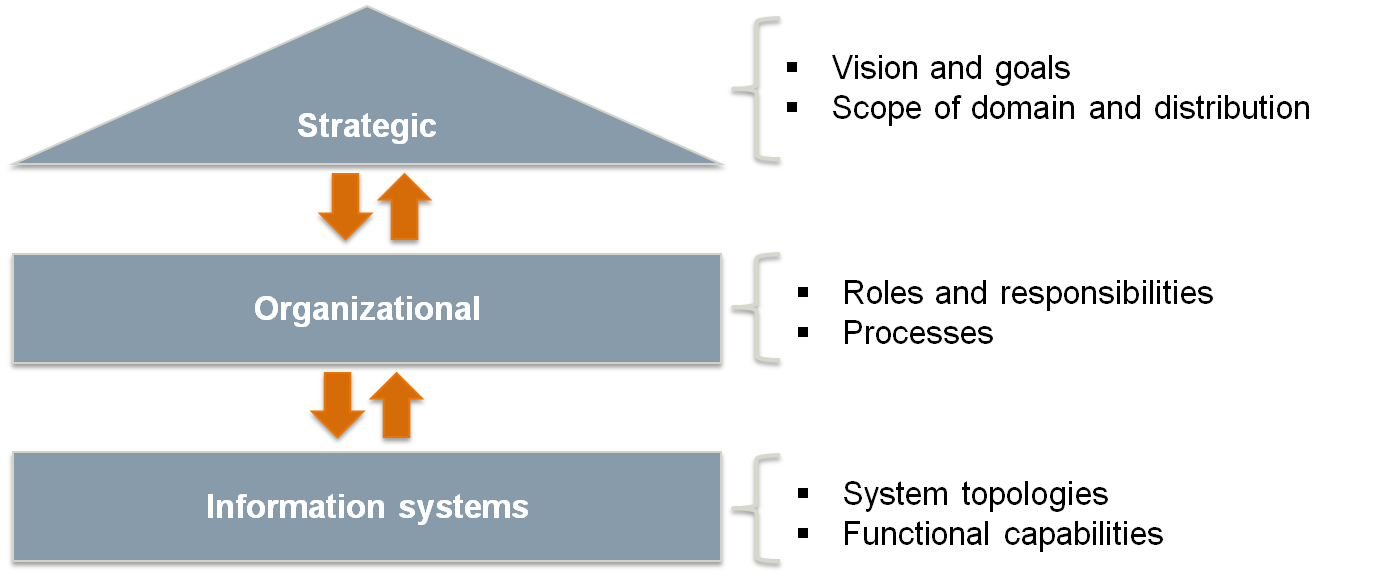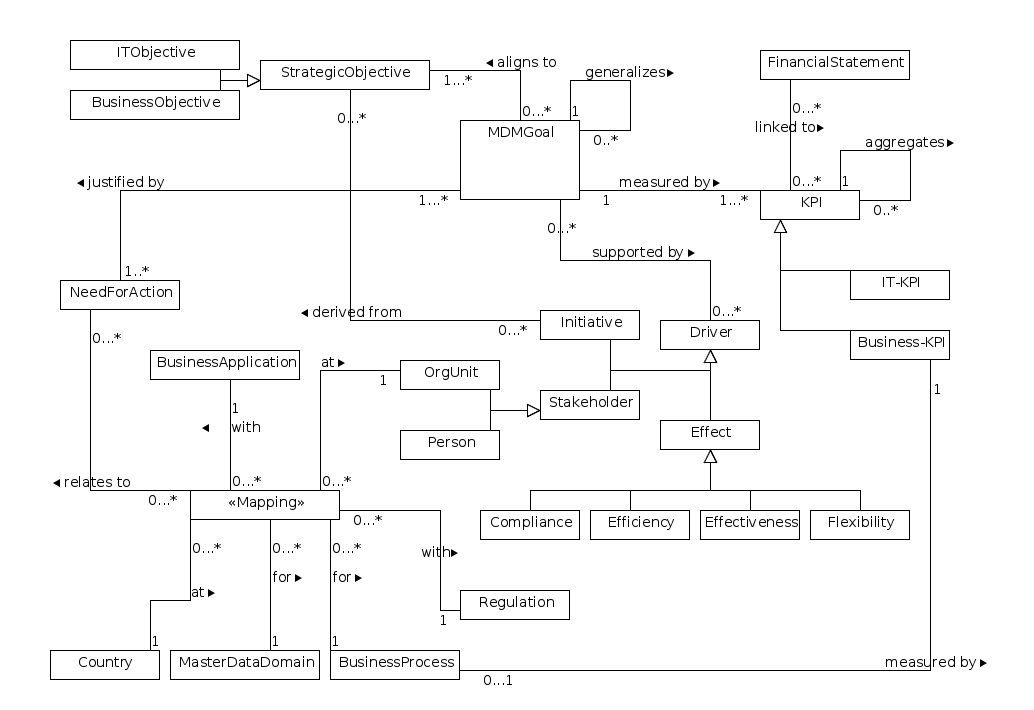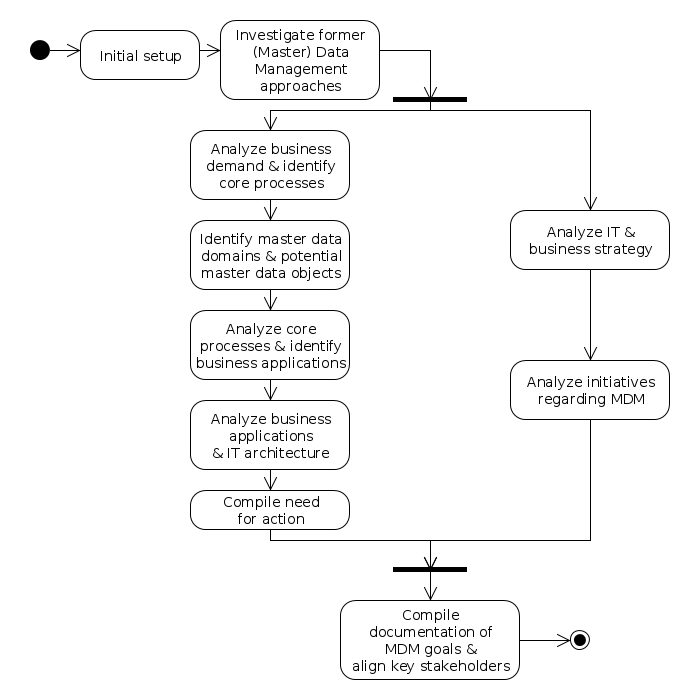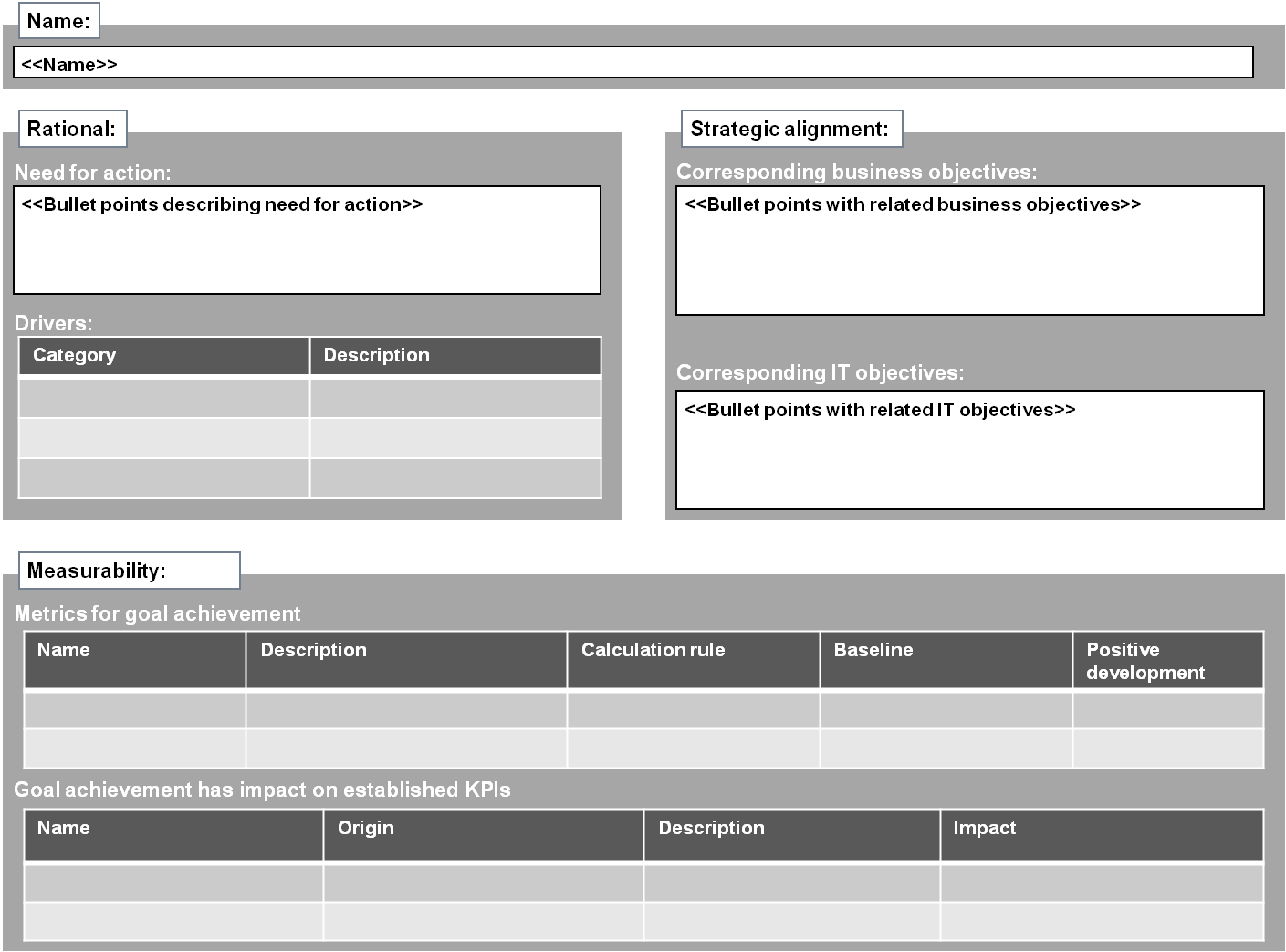Master Data Management (MDM) as an application-independent process for the description, ownership and management of core business data entities has lately become a hot-topic for practitioners as well as researchers. It strives to enable a consistent, shared, and contextual use of core business data entities across systems and lines of business. MDM is considered a complex and multidisciplinary task comprising of design activities on a strategic, organizational and information systems level. In practice, MDM initiatives often focus exclusively on the information systems level. As a result, initiatives struggle to sufficiently engage and retain management stakeholders due to the lack of a clear vision, strategy, and roadmap as part of the strategic level.
The thesis at hand aims at providing the groundwork for these strategic activities by proposing a method for the identification and documentation of organizationspecific goals as a means to demonstrate the payoff of MDM initiatives as well as to increase management involvement. Following the guidelines of Design Science Research, the method is developed, applied and evaluated at a financial services provider, thereby incorporating the practical experience of data management professionals. Furthermore, this work comprehensively sums up current research and literature on MDM to foster an overall understanding regarding the aforementioned design activities and their interrelations. The thesis concludes by providing a critical reflection and topics for future research.
An MDM approach comprises design activities on a strategic, organizational and information systems level. These connected design areas (as depicted below) provide a way of thinking about and understanding Master Data Management, and its structures or systems required. The thesis describes these design areas in detail.

In order to develop a method for identifying organization-specific goals for MDM, the following desing principles have been defined:
These design principles have been translated into a conceptual model to oversee the overall context of an MDM goal:

Finally, to instantiate this conceptual model, a method comprising of defined process steps was defined that ultimately serves as a guideline for practitioners to preliminary assess MDM for their organization and explicate respective goals.

The approach for measuring MDM goals follows a twofold approach: lower level performance metrics that focus on checking the degree a particual MDM goal is currently fulfilled as well as established higher level metrics (KPI's) from business or IT (e.g., used within internal dashboard or scorecards) that can be positively impacted by achieving a specific MDM goal.
In order to communicate identified MDM goals to a broader (non-IT) audience, a template to abstract from the conceptual model was designed:

To demonstrate the practical use of the developed method, it has been further applied and evaluated at the industry partner (see chapter 4 and 5).
All in all, the proposed method for identifying organization-specific MDM goals presented in this thesis serves practitioners as a guideline for preliminary assessing MDM for their organization and further supports the definition of dedicated MDM vision, strategy and roadmap.
| Name | Type | Size | Last Modification | Last Editor |
|---|---|---|---|---|
| Activities_alternative2.png | 36 KB | 21.10.2013 | ||
| ComplexityOfMDM.png | 38 KB | 18.09.2013 | ||
| FinalPresentation_Mirbeth_public.pdf | 1,15 MB | 13.11.2013 | ||
| Goal_Meta_alternative3.png | 36 KB | 21.10.2013 | ||
| Goal_template.png | 23 KB | 13.11.2013 | ||
| KickOffPresentation_Mirbeth_public.pdf | 599 KB | 17.10.2013 | ||
| Mi13_public.pdf | 1,36 MB | 13.11.2013 |